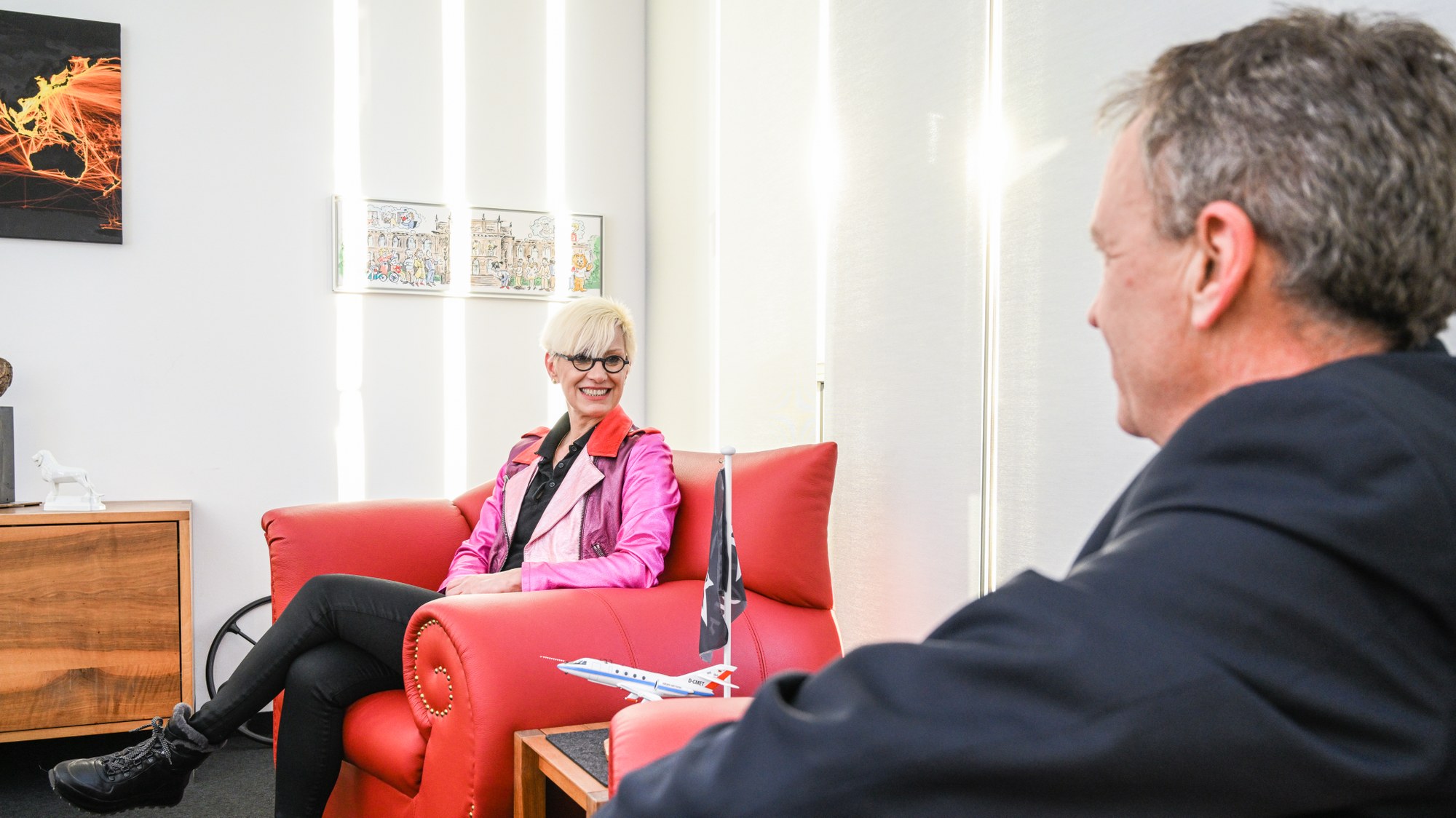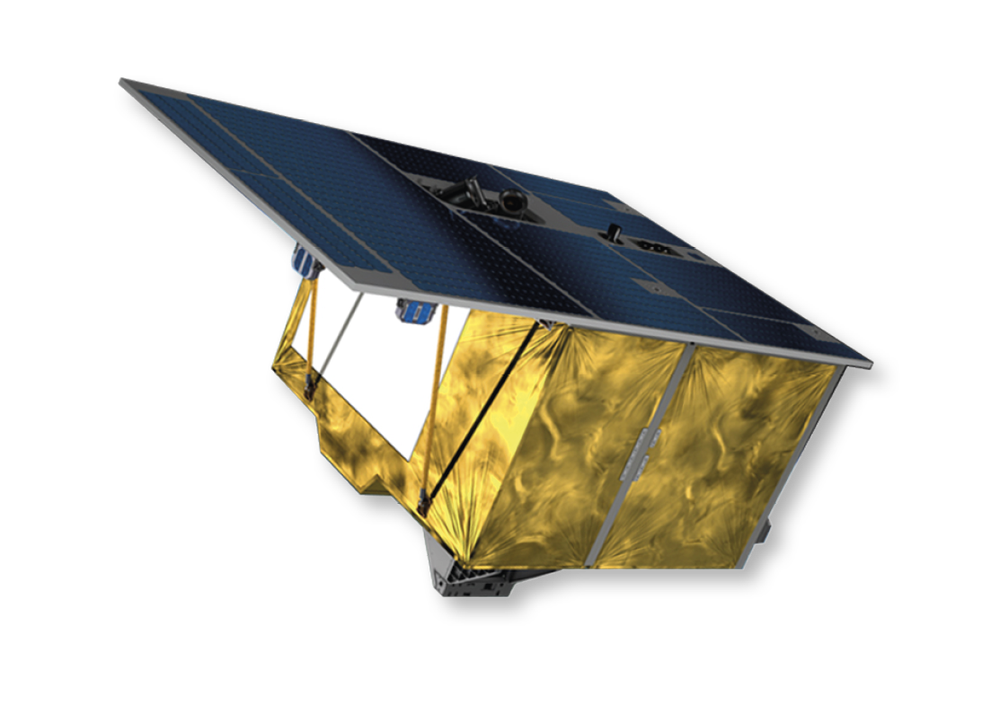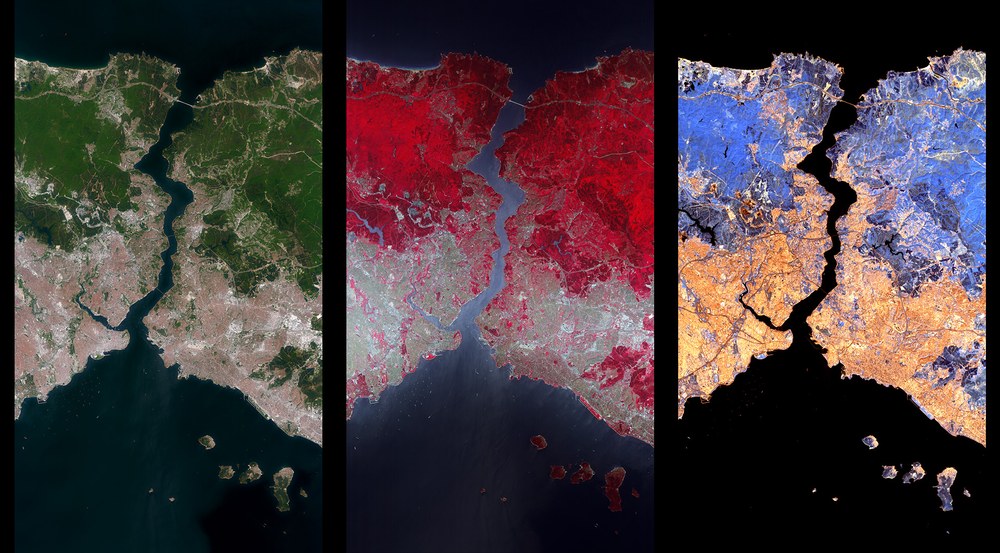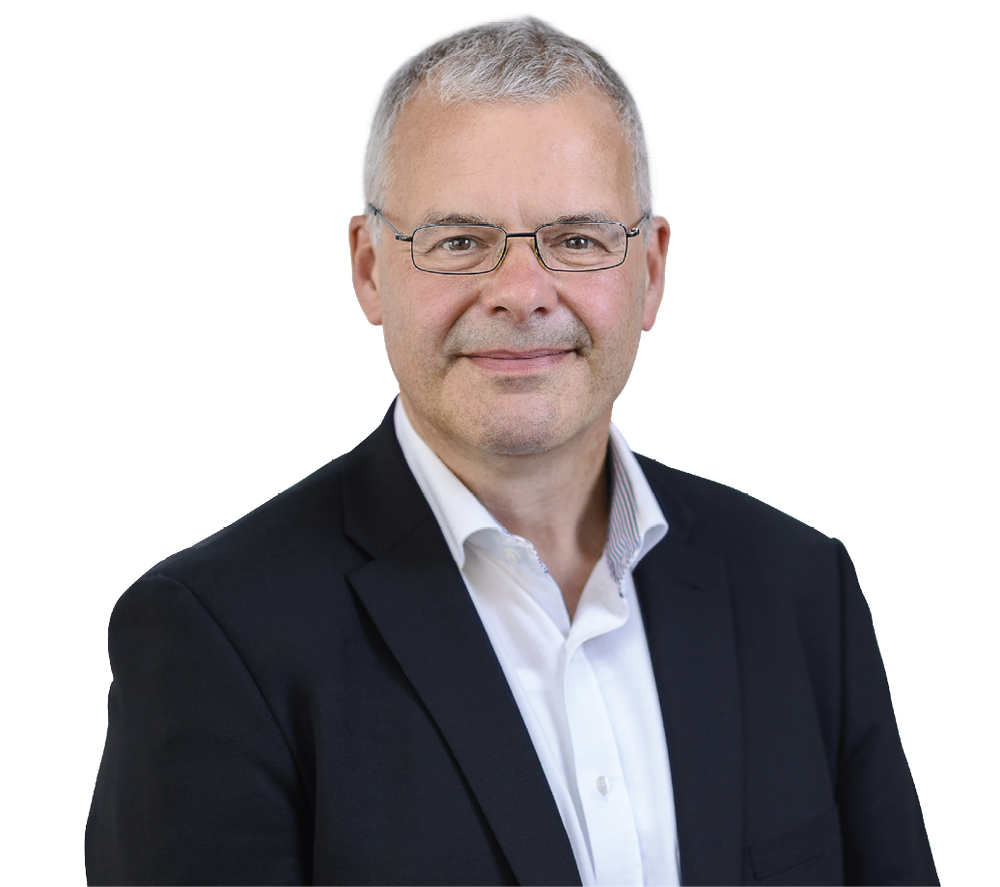Sustainable research – Research for sustainability

Fuel-efficient aircraft, cars that collect their own brake dust and satellites that recognise when fields need to be fertilised – the topic of sustainability plays an important role at DLR. This applies not only to its research activities, but also to DLR as an organisation. In this interview, the Chair of the DLR Executive Board, Anke Kaysser-Pyzalla, and the Deputy Chair of the Executive Board, Klaus Hamacher discuss DLR's commitment to sustainability.

Sustainability has become an important keyword for innovation. However, the question often arises as to whether everything labelled as sustainable is in fact sustainable. At DLR, we can answer this question quite clearly. Professor Kaysser-Pyzalla, what does sustainability mean for DLR?
Anke Kaysser-Pyzalla: Thinking and acting sustainably has a threefold significance for us at DLR. Firstly, as an organisation with 54 institutes and facilities and more than 10,000 personnel across 30 locations, we prioritise sustainable actions. Secondly, our expertise in aeronautics, space, energy and transport, as well as in the cross-sectoral areas of security and digitalisation drives sustainable advancements. And thirdly, the orientation of our research topics, with which we strive to successfully achieve everything from innovation and technology through to transfer to the economy.

Mr Hamacher, you are responsible for administrative and operational management at DLR. This means that you are also responsible for the sustainability of the organisation. There is certainly more to this than turning down the heating and switching off the lights, correct?
Klaus Hamacher: Naturally, this is also a matter of sustainability. But the concept of sustainability is much broader today. It ranges from sustainable organisational management to sustainable personnel and energy management to sustainable infrastructures – including, of course, scientific infrastructure. When we construct new buildings, for example, we make sure that we do so in a sustainable manner, and we apply concepts that contribute to our strategy of sustainable work.
The operation of the research infrastructure depends on the specific research activities being conducted, for example in the field of aeronautics. DLR carries out research into climate-friendly air transport; emission-free flight is an important vision for the future. What exactly is DLR doing here?
Kaysser-Pyzalla: DLR conducts extensive research on the entire air transport system, beginning with aircraft manufacturing. Our researchers develop fuel-efficient designs and optimise maintenance, repair and overhaul processes. We also focus on important aspects such as route planning, propulsion system selection and establishing the necessary airport infrastructure. Our research also investigates flight routing, with a particular focus on climate-friendly air traffic management. The consequences of climate change and also of globalisation demand consistent action – in research, in the aviation industry and in the air transport economy as a whole.
"The consequences of climate change and also of globalisation demand consistent action – in research, in the aviation industry and in the air transport economy as a whole."
Professor Anke Kaysser-Pyzalla, Chair of the DLR Executive Board
DLR's new research aircraft, ISTAR, has successfully conducted its inaugural measurement flights. ISTAR will contribute to the advancement of aircraft, propulsion and assistance systems. It will be accompanied by a digital twin throughout its operational lifespan. How are digitalisation and sustainability connected?
Kaysser-Pyzalla: Digitalisation accelerates progress, enabling us to increase the rate at which we advance sustainable technologies. This translates into the ability to prototype new aircraft and various other modes of transport earlier, leading to faster market entry in collaboration with industry. In addition, digitalisation allows for more rapid fleet renewal and faster improvement of the quality of the corresponding aircraft or other forms of mobility. Digitalisation is a catalyst for climate protection.

Digitalisation also plays a central role at DLR. Mr Hamacher, to what extent does this make DLR more sustainable?
Hamacher: Over the past few decades, digitalisation has greatly improved process efficiency. We have witnessed remarkable transformations from the paper-based systems we used 30 years ago. It has played a significant role in shaping new work practices, enabling virtual formats and remote working. However, it is crucial not to overlook the potential drawbacks or challenges associated with digitalisation. One notable aspect is the considerable energy consumption of IT infrastructure, particularly high-performance computers. Furthermore, we must ensure that people remain at the heart of the process.
Kaysser-Pyzalla: On the other hand, I believe digitalisation offers opportunities to certain groups that would otherwise not be able to participate in the world of work to the same extent.
The possibility of working remotely reduces the need for employees to travel.
Hamacher: Sustainable mobility involves prioritising the avoidance of carbon dioxide emissions in business operations over mitigating or compensating for them. More specifically, avoiding carbon dioxide emissions requires formats that enable collaborative virtual work. Regarding employee mobility, we are implementing a number of initiatives, such as installing electric charging stations at DLR sites and supporting the use of public transport. These efforts contribute to broader sustainability goals.
Sustainable mobility and energy generation are also the focus of research in the areas of transport and energy. What is the status in these fields?

Kaysser-Pyzalla: In DLR's transport programme, we have devoted extensive efforts to advancing sustainable modes of travel, transport policies and spatial planning. We have successful projects in all these areas. ZEDU stands out as the first truly emission-free vehicle; even the particulates from braking processes are almost completely captured. Climate-friendly, door-to-door mobility and the development of mobility concepts have long been integral to our projects in the transport sector. We are actively exploring ways to design liveable spaces that prioritise human well-being. Together with local municipalities, we have initiated numerous regional projects that play a crucial role in transferring our expertise into practical applications.
At the Wind Energy Research Farm, DLR is investigating energy generation for urban mobility, among other things. What exactly is being researched at Krummendeich?

Kaysser-Pyzalla: At the Wind Energy Research Farm, researchers are exploring how we can harness renewable energy. In the field of solar energy research, we are already extremely successful in terms of the design concepts for power plants. This encompasses optimisation efforts in the laboratory, as well as the operation of real power plants. We have successfully inaugurated a parabolic trough power plant in Portugal, and we recently unveiled the Krummendeich wind farm. Wind energy is the second major pillar of renewable energy. At Krummendeich, we are dedicated to further improving the design of future wind farms. Here, we are researching how to swiftly adapt to changing weather conditions, minimise noise pollution, enhance efficiency and optimise the placement of wind turbines – all of this, of course, with the expertise we bring from aerospace research.
Spaceflight, in particular, has faced criticism for its perceived lack of sustainability. However, satellites play a vital role in monitoring changes on Earth. How does remote sensing of the Earth contribute to sustainable development?

Kaysser-Pyzalla: Remote sensing of the Earth has become indispensable for modern farming methods, for example. It has the potential to enable even more precise management of agricultural land in the future. This not only includes the precise application of fertilisers but also the selection of suitable crops, which depends on soil composition. These insights can be derived from satellite imagery. We also anticipate that satellite imaging will facilitate more rapid detection of plant diseases. We are currently monitoring biomass from space, and in the future, we will be capable of more accurately identifying drought conditions, specifically the lack of soil moisture down to a certain depth.

"We have developed a number of measures to enhance work-life balance, diversity and family friendliness that make DLR an attractive employer."
Klaus Hamacher, Deputy Chair of DLR Executive Board
Mr Hamacher, innovative ideas and new approaches are essential for sustainable development. Research at DLR aims to address the most pressing questions concerning the future. Is that also something that motivates people to work at DLR?
Hamacher: Surveys conducted in recent years have shown that DLR is one of the most popular employers in Germany – not only among research institutions, but also when compared to companies. This applies not only to newcomers but also to personnel who have been working at DLR for a long time. To maintain this, we have developed a number of measures to enhance work-life balance, diversity and family friendliness that make DLR an attractive employer. Their impact is visible in published studies. However, our appeal as an employer is also based on our fascinating research – which addresses the sustainable development of society.
Kaysser-Pyzalla: All our research topics address the major economic or political challenges facing society. For us, for example, sustainability also entails security research. After all, we can only live sustainably in a social system such as ours if it can protect itself appropriately against external influences.
A stronger focus on sustainability
Three questions for Professor Martin Wiedemann, Chair of DLR's Scientific-Technical Advisory Council (WTR) and Director of the DLR Institute of Lightweight Systems.

Professor Wiedemann, as Chair of the WTR, you are the voice of the DLR institutes and facilities. How are the institutes and facilities directing their research towards sustainability?
Our institutes and facilities have long been associated with the topic of sustainability. Our energy research focuses on the production of energy using renewable resources. In our transport research, we optimise transport routes. In aeronautics, our focus is on enhancing energy efficiency. Sustainability is also a key aspect in space research, in fields such as remote sensing of the Earth. All of these research projects consider sustainability without us explicitly labelling it sustainability research.
Does this change the role of research?
As new questions emerge, it becomes essential to evaluate them using a whole-system approach. What makes an action sustainable in a broader context? Consider, for instance, the issue of handling the materials from decommissioned aircraft or wind turbines, which contributed to energy savings in the operation or to energy production. We need to analyse the entire life cycle of a product. This requires expertise and scientific methods, which are among DLR's core competencies.
Research is not possible without consuming resources, is it?
Our most valuable resource is knowledge. To acquire knowledge, we must use other resources. Research invariably requires the consumption of energy and materials. As researchers engaged in extensive practical testing, we are aware of the utilisation of resources in our work. However, we very carefully consider our research results and our use of resources.
The DLR Scientific-Technical Advisory Council
The DLR Scientific-Technical Advisory Council is composed of the heads of institutes and facilities as well as personnel from DLR's research areas and its scientific and technical resources. The Council advises the Executive Board and the Senate on all scientific and technical matters.
An article by Katja Lenz from the DLRmagazine 173
